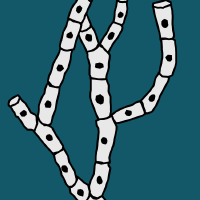Topic Menu
► Topic MenuTopic Editors


The Role of Innate Lymphocytes in Infection and Host Immunity
Topic Information
Dear Colleagues,
The innate and adaptive immune systems have evolved to sense infections and limit disease severity. Bridging these two systems, innate lymphocytes circulating in the periphery or residing in tissues and mucosal barriers are poised to mount rapid immune responses. The class of innate lymphocytes is broad, including those that express germline-encoded antigen receptors, e.g., innate lymphoid cells (ILCs) and natural killer (NK) cells, and those that express antigen receptors that undergo somatic recombination, e.g., mucosal-associated invariant T (MAIT) cells, natural killer T (NKT) cells, γδ T cells, and innate B cells.
The receptors of innate lymphocytes can recognise a variety of antigenic structures; some subsets can engage with peptide-bound classical major histocompatibility complexes (MHC) or nonpeptide antigens that are presented by nonclassical MHC proteins or are indirectly activated through the actions of cytokines. Their abundant numbers at mucosal surfaces and their rapid effector function renders these specialised immune cells as an ideal first-line defence against invading pathogens. Although they may provide critical effector roles during infections, their rapid responses can also contribute to disease pathogenesis.
The aim of this Topic is to explore the contributions of innate lymphocytes in bacterial, fungal, and viral infections and host immunity. We encourage the submission of all types of manuscripts (e.g., reviews, research articles, and short communications) pertaining to pathogen interactions with innate lymphocyte populations and the ensuing host immunity, including but not limited to the following topics:
- Antimicrobial mechanisms of innate lymphocytes;
- Mechanisms of surveillance against bacterial, fungal, and viral infections;
- Microbial mechanisms of immune evasion;
- Microbial immunopathogenesis and immunopathology;
- Pathogen–host interactions, including co-evolution of pathogens and host defence factors, immune exhaustion, and microbial latency;
- Innate lymphocyte-based vaccination strategies and antimicrobial immunotherapies;
- Emerging and zoonotic infectious diseases and innate lymphocyte interactions;
- Resolution of microbial infections.
Dr. Edwin Leeansyah
Dr. Liyen Loh
Topic Editors
Keywords
- mucosal immunity
- innate lymphoid cells (ILCs)
- mucosal-associated invariant T (MAIT)
- antiviral response
- natural killer cells (NKT)
- innate lymphoid cells
- major histocompatibility complexes (MHC)
- γδ T cells
- cytokines
- emerging and zoonotic
- immune evasion
- antimicrobial mechanisms
- microbial immunopathogenesis
- microbial immunopathology
- pathogen–host interactions
- immune exhaustion
- microbial latency
- vaccination strategies
- SARS-CoV-2
Participating Journals
| Journal Name | Impact Factor | CiteScore | Launched Year | First Decision (median) | APC |
|---|---|---|---|---|---|

Viruses
|
4.7 | 7.1 | 2009 | 13.8 Days | CHF 2600 |

International Journal of Molecular Sciences
|
5.6 | 7.8 | 2000 | 16.3 Days | CHF 2900 |

Journal of Fungi
|
4.7 | 4.9 | 2015 | 18.4 Days | CHF 2600 |

Microorganisms
|
4.5 | 6.4 | 2013 | 15.1 Days | CHF 2700 |

Microbiology Research
|
1.5 | 1.3 | 2010 | 16.6 Days | CHF 1600 |

MDPI Topics is cooperating with Preprints.org and has built a direct connection between MDPI journals and Preprints.org. Authors are encouraged to enjoy the benefits by posting a preprint at Preprints.org prior to publication:
- Immediately share your ideas ahead of publication and establish your research priority;
- Protect your idea from being stolen with this time-stamped preprint article;
- Enhance the exposure and impact of your research;
- Receive feedback from your peers in advance;
- Have it indexed in Web of Science (Preprint Citation Index), Google Scholar, Crossref, SHARE, PrePubMed, Scilit and Europe PMC.

